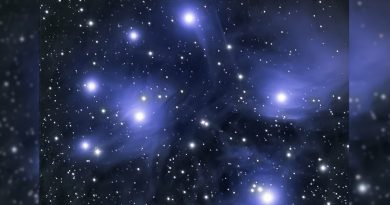March 21st: Let the Messier Marathon Begin!

Messier’s List
You’ve probably heard of Charles Messier’s catalog of celestial deep-sky objects compiled for use by 18th-century comet hunters. When these comet seekers stumbled upon an unknown, faint, fuzzy object in their small telescopes, they’d consult this list to see if it was a known object. It was first published in 1774 and expanded with help from fellow observers in that century. Astronomers and amateurs in the early 20th Century rediscovered it, added a few new objects, and made corrections. There are now 110 “M” objects in the modern catalog. The value of the list in modern times is that it contains many “showpiece” objects, visible to small telescopes, from northern latitudes.
Every sky chart labels the location of these objects with the letter “M” and a number. For instance, the brightest Messier is M45 — the famous naked-eye Pleiades open star cluster. A third of the way around the sky you’ll find the dimmest: M95 — a galaxy of magnitude 10 or 11 (depending on the source) in Leo. Objects include supernova remnants (M1), open and globular clusters, planetary nebulae, diffuse nebulae, H II regions, a Milky Way star cloud, an asterism, a double star, and galaxies (such as M110).
What must puzzle the current generation of amateur astronomers is that many of these objects, when sighted through small telescopes, would not give the impression of being comets. But Messier and his friends lived at a time when good glass blanks were hard to find and work into the proper shape. Objects looked blurry in their instruments. So, the stunning horde of sparkling jewels in a globular cluster was lost on Messier and friends: they often noted these objects as being “nebulae without stars.”

Messier Marathon
If you have become familiar with the location and appearance of the Messier objects, you might find it a fun challenge to observe them all in a “Marathon” all-night observing session. When the Moon is New and the Sun is in the Pisces / Aquarius region, it is possible to see all the Messier objects in one night if your latitude is not too far north or south. How is this possible?
Referring to the partial sky map on the right, the path of the Sun is shown as orange dots (ecliptic path) and the Messier objects as numbered ovals. When the Sun is near any of the objects on the path, they are lost in daylight or twilight and not visible. But note the gap in objects on the ecliptic path when the Sun is near the Pisces / Aquarius border (orange dots crossing the 0° Declination line). Only M52 in Cassiopeia occupies that gap and it is far enough north from the solar glare to become visible quite soon after sunset.
The typical Marathon sequence is to wait for the days around the New Moon when the Sun is in the “Messier gap” and start by spotting the objects in deep twilight that are about to set in the west: M74, M77, M33, M31, and M32 (all on the left side of sky map). The observer continues to sweep up objects moving eastward until they reach the eastern horizon, where Messier objects continue to rise all night. As morning twilight begins, they scramble to identify M2, M72, M73, and M30 (right side of the sky map) before the Sun blots them out from the sky. The exact viewing order is latitude dependent and there is some debate — see the More Info section below for links to plan your own Messier Marathon.
Messier Marathon 2023
This year the new Moon in March is on the 21st, just one day after the start of Northern Hemisphere Spring. That would make the evening of March 21st the best time to try for a Marathon with a few days before and after also being good. This makes the weekends of March 18th and March 25th the best times to host organized events.
Did you observe, sketch, or image with Tele Vue gear? We’ll like your social media post on that if you tag it #televue and the gear used. Example:
#televue #tv85 #ethos #MessierMarathon
Do you want your Tele Vue images re-posted on Tele Vue Optics’ Social Media accounts? Use this hashtag for consideration:
More Info
- For a customized list by location and horizon conditions, see the interactive Messier Marathon Planner by Larry McNish that is hosted on the Calgary Centre RASC website.
- If you’d like to “browse” through the objects for planning purposes, Wikipedia has a table of Messier objects that can be sorted by name, position, magnitude, etc.
- Tom Polakis has published a northern latitude vs. date graph to determine the best date to view all the objects based on your location.
- Why Choose Tele Vue Telescopes (for the Messier Marathon) (mobile site) and warranty info.
- Why Choose Tele Vue Eyepieces (for the Messier Marathon)(mobile version) and warranty info.








